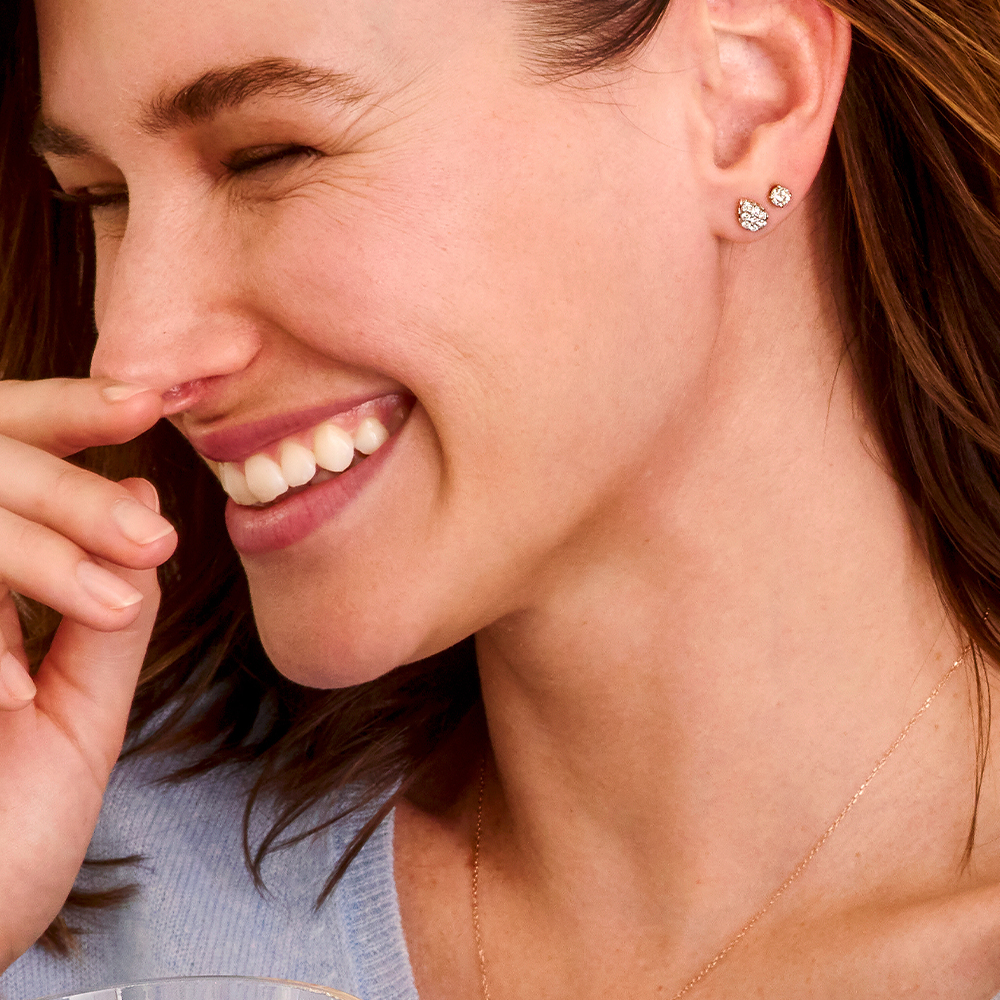People frequently wear earrings, especially studs, because they’re versatile and elevate your look. Most people own a few pairs of go-to studs. However, if you have more sensitive skin, you may experience discomfort or allergic reactions when wearing some earrings. Common reactions include itching, redness, and irritation where the metal touches the ear. Consider hypoallergenic earrings if you’re someone who has allergic reactions to metal. Keep reading to learn more!

What are Hypoallergenic Earrings?
Hypoallergenic earrings minimize the risk of an allergic reaction because they contain little to no potentially irritating alloys (mixtures). Some jewelry metals used in jewelry are a mixture of metals combined for additional strength. Nickel is a common additive used to reinforce softer metals like silver or gold. Metal sensitivities can vary, but nickel is a common metal allergy. Jewelry is usually considered hypoallergenic if it doesn’t contain nickel or not enough nickel to cause an allergic reaction. Hypoallergenic jewelry also won’t corrode, tarnish, or rust over time.
What are Hypoallergenic Stud Earrings made of?
Hypoallergenic stud earrings are made of metals that won’t irritate the wearer’s ears because they don’t contain as much metal as other alloys. Examples of hypoallergenic metals include stainless steel (with a high percentage of chromium), titanium, niobium, and platinum. They are often well-tolerated by individuals with sensitive ears.
Coatings and Plating
Another option for those with metal allergies is earrings with specialized coatings or plating, like rhodium or gold vermeil. They can provide an additional barrier between the metal and the skin, which reduces the risk of irritation. Typically white gold and sterling silver are rhodium plated. Vermeil refers to sterling silver that is plated (has a thin layer) of gold.
Comfortable Designs
Some stud styles might also irritate your skin if you have sensitive skin. Look for more comfortable designs, such as earrings with flat backs, smooth edges, and lightweight materials. These options prevent discomfort and pressure on the earlobe. You can also look at the earring backs. You might not even realize there are different options, such as butterfly backs, screw backs, and pushbacks.
- Butterfly Backs: You’d recognize this style of earring back. They’re also known as clutch, friction, or butterfly backs because they’re discs with curled-up tabs that oppose one another. These act as springs that pinch the ear post. The post has notches that function as stops so the clutch backs can hold the earring in place.
- Screw Backs: This style of earring back is very secure because it can not be pulled off and has to be screwed. The post has threads that allow the earring back to screw on and off. The security that these backs offer makes them a good option for high-priced studs. Like the push-backs, these are also smaller earring backs.
- Push Backs: This style of earring back is familiar and also known as friction back. It has a flat back plate with a hole the size of the post. It features two scrolls of metal that curve up and press against the post with a light spring tension to hold the back in place. Push backs come in a variety of sizes, and they’re easy to put on and take off. These are discreet, small earring backs.
Some earring backs might be more comfortable than others on your ear. If you have a more valuable earring, like a pair of natural or lab diamond studs, you also want to look at the backs to secure your studs on your ears.
Closing Points
If you have sensitive skin, select a hypoallergenic metal so your ear lobes aren’t irritated by your stud earrings. You can also look for studs with specialized coating or plating that provide an extra barrier between the metal and your skin. If your earlobes are more sensitive, look for stud designs that are more comfortable and lightweight, such as studs with flat backs and smooth edges. You can also select comfortable earrings backs that will keep your skin safe and your studs secure.









Leave a Reply